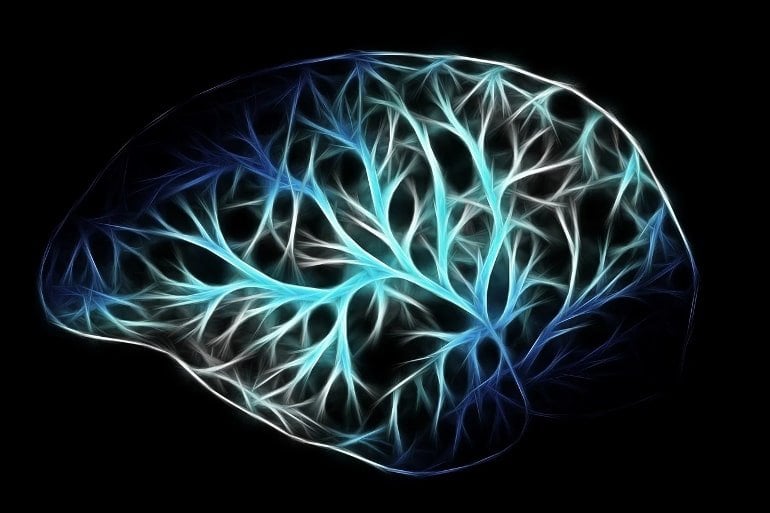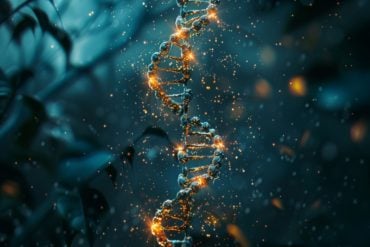Summary: Using only enzymes, researchers were able to change synapses between inhibitory and excitatory types.
Source: Colorado State University
As you’re reading this sentence, the cells in your brain, called neurons, are sending rapid-fire electrical signals between each other, transmitting information. They’re doing so via tiny, specialized junctions between them called synapses.
There are many different types of synapses that form between neurons, including “excitatory” or “inhibitory,” and the exact mechanisms by which these structures are generated remain unclear to scientists.
A Colorado State University biochemistry lab has uncovered a major insight into this question by showing that the types of chemicals released from synapses ultimately guide which kinds of synapses form between neurons.
Soham Chanda, assistant professor in the Department of Biochemistry and Molecular Biology, led the study published in Nature Communications that demonstrates the possibility of changing the identity of synapses between neurons, both in vitro and in vivo, through enzymatic means.
The other senior scientists who contributed to the project were Thomas Südhof of Stanford University and Matthew Xu-Friedman of the University at Buffalo.
In the lab, Chanda and colleagues were able to make synapses changes between excitatory and inhibitory types, using only enzymes, by making the neurons express just a few genes that induced a cascade of changes in the synapses’ machinery.
Such a breakthrough could have major implications for treating brain diseases that are caused by malfunctions in synaptic information processing and exchange.
“We know very little about how the human brain functions, and at the center of it, we need to understand how neurons communicate with each other,” Chanda said. “Understanding the fundamental mechanisms of synapse formation and maintenance has tremendous implications in understanding brain disorders.”

Their results show that the cell-adhesion proteins expressed in the synaptic junction area are not the only purveyors of the synapses’ function, as some have thought; rather, chemicals called neurotransmitters that are released from the presynaptic site (where the information is coming from) also seem to play a major role in controlling which types of synapses form, and where.
The CSU team used stem cell-derived human neurons to demonstrate their ability to produce certain types of synaptic connections by controlled release of specific neurotransmitters. Collaborators at the University at Buffalo showed the same phenomenon in live mouse brains.
“Synapses need lots of other machinery; the neurons took care of all that and turned excitatory synapses into inhibitory ones – a fundamental change in their identity,” Xu-Friedman said.
Chanda is fascinated by neurons, “because no other cell type in the human body has the same level of functional complexity that is tied so closely to their shape and structure.”
The students who performed the majority of the experiments were co-authors Scott Burlingham and Lindsay Peterkin at CSU, and Nicole Wong at the University at Buffalo.
About this neuroscience research news
Author: Anne Manning
Source: Colorado State University
Contact: Anne Manning – Colorado State University
Image: The image is in the public domain
Original Research: Open access.
“Induction of synapse formation by de novo neurotransmitter synthesis” by Soham Chanda et al. Nature Communications
Abstract
Induction of synapse formation by de novo neurotransmitter synthesis
A vital question in neuroscience is how neurons align their postsynaptic structures with presynaptic release sites. Although synaptic adhesion proteins are known to contribute in this process, the role of neurotransmitters remains unclear.
Here we inquire whether de novo biosynthesis and vesicular release of a noncanonical transmitter can facilitate the assembly of its corresponding postsynapses.
We demonstrate that, in both stem cell-derived human neurons as well as in vivo mouse neurons of purely glutamatergic identity, ectopic expression of GABA-synthesis enzymes and vesicular transporters is sufficient to both produce GABA from ambient glutamate and transmit it from presynaptic terminals.
This enables efficient accumulation and consistent activation of postsynaptic GABAA receptors, and generates fully functional GABAergic synapses that operate in parallel but independently of their glutamatergic counterparts.
These findings suggest that presynaptic release of a neurotransmitter itself can signal the organization of relevant postsynaptic apparatus, which could be directly modified to reprogram the synapse identity of neurons.






